2-я международная конференция по математическим моделям и их применению. Рубрика в журнале - Сибирский аэрокосмический журнал
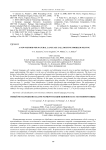
A new method for natural language call routing problem solving
Статья
Natural Language call routing remains a complex and challenging research area in machine intelligence and language understanding. This paper is in the area of classifying user utterances into different categories. The focus is on design of algorithm that combines supervised and unsupervised learning models in order to improve classification quality. We have shown that the proposed approach is able to outperform existing methods on a large dataset and do not require morphological and stop-word filtering. In this paper we present a new formula for term relevance estimation, which is a modification offuzzy rules relevance estimation for fuzzy classifier. We propose to split the classification task into two steps: 1) “garbage” class identification; 2) further classification into meaningful classes. The performance of the proposed algorithm is compared to several standard classification algorithms on the database without the “garbage” class and found to outperform them with the accuracy rate of 85,55 %. Combination of our approach with 9-NN algorithm for two-stage classification problem definition provides the accuracy rate of 77,11 % for test sample at whole.
Бесплатно
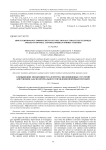
Статья
The optimal control problem for nonlinear dynamic systems is considered. The proposed approach is based on both partially analytical and partially numerical techniques of the optimal control problem solving. Optimal control problem is reduced to unconstrained extremum problem, which is related to seeking for the initial point of the co-state variables that would satisfy the boundaries. To solve the optimization problem, well-known global optimization techniques are suggested and compared. The performance of the evolutionary strategies algorithm was increased by implementing the special restarting condition in the scheme.
Бесплатно
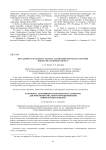
Development of adaptive genetic algorithms for neural network models multicriteria design
Статья
In this paper modifications of single- and multi-objective genetic algorithms are described and testing results of these approaches are presented. The gist of the algorithms is the use of the self-adaptation idea leading to reducing of the expert significance for the algorithm setting and expanding of GAs’ application capabilities. On the basis of offered methods the program system realizing the technique for neural network models design was developed. The effectiveness of all algorithms was investigated on a set of test problems.
Бесплатно
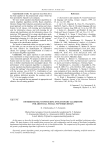
Distributed self-configuring evolutionary algorithms for artificial neural networks design
Статья
In this paper we describe the method of automatic neural network design based on the modified evolutionary algorithms. The main features of the modification proposed are self-configuration and the usage of distributed computing. Implemented algorithms have been tested on the set of classification tasks. The comparison of the genetic algorithm and the genetic programming algorithm’s efficiencies is presented.
Бесплатно
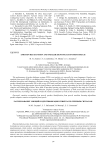
Emotion recognition and speaker identification from speech
Статья
The performance of spoken dialogue systems (SDS) is not perfect yet, especially for some languages. Emotion recognition from speech (ER) is a technique which can improve the SDS behavior by finding critical points in the human-machine interaction and changing a dialogue strategy. Inclusion of the speaker specific information, by conducting the speaker identification procedure (SI) at the set up of ER task could also be used in order to improve the dialogue quality. Choosing of both appropriate speech signal features and machine learning algorithms for the ER and SI remain a complex and challenging problem. More than 50 machine learning algorithms were applied in the study for ER and SI tasks, using 9 multi-language corpora (Russian, English, German, and Japanese) of both acted and non-acted emotional utterance recordings. The study provides the results of evaluation as well as their analysis and future directions.
Бесплатно
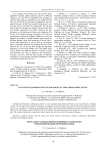
Intelligent information technologies in time series forecasting
Статья
Intelligent information technologies enable to solve complex data mining problems in various domains of human activity. In this paper such popular techniques as artificial neural networks, fuzzy rule based systems and neuro-fuzzy systems are considered. A genetic programming algorithm is used for building intelligent systems ensembles in order to improve the performance and reliability of decision making. The methods proposed are applied to time series prediction task. The results obtained are compared to other state-of-the-art time series forecasting techniques.
Бесплатно
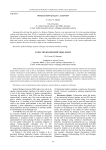
Статья
Automatically deriving the quality of a Spoken Dialogue System is an important task for both assessing dialogue systems and improving them. Work on automatic quality estimation for each system-user-exchange further holds the opportunity of using this quality information for online-adaption of the dialogues. The Interaction Quality paradigm is the first metric holding those features. Hence, this contribution gives an overview over the Interaction Quality paradigm and reviews recent estimation approaches. Furthermore, it renders drawbacks of the current approaches and proposes further directions in order to improve the estimation accuracy.
Бесплатно
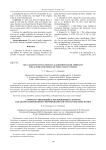
Self-adjusted evolutionary algorithms based approach for automated design of fuzzy logic systems
Статья
A new approach to form a fuzzy logic system with evolutionary algorithms is introduced. Several algorithms were implemented as programs, efficiency measurements were made with and without self-adjustment. A new data representation method was developed for fuzzy rules base coding in genetic programming method by using reverse polish notation principle. The genetic algorithm was adapted to adjust linguistic variables semantics. The efficiency of developed algorithm was shown and compared to analogies on several test regression problems and real classification problems.
Бесплатно
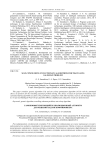
Self-configuring evolutionary algorithms for travelling salesman problem
Статья
This paper considers genetic algorithm (GA) and ant colony optimization algorithm (ACO) with the automated choice of operators for the travelling salesman problem solving. The choice is based on operator probabilistic rates calculated during algorithm execution. The performance comparison with other heuristics such as Lin-Kernigan heuristic (3-opt) and Intelligent Water Drops algorithm (IWDs) is fulfilled and competitive results are demonstrated.
Бесплатно
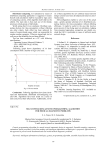
Self-configuring genetic programming algorithm for medical diagnostic problems
Статья
Genetic programming algorithm for neural network automatic design is suggested. Ensemble member competence estimations based procedure of decision making with intelligent information technologies is proposed. Effectiveness of the approach is proved on the benchmark and real-world medical diagnostic problems.
Бесплатно
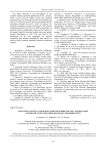
Статья
In this paper we describe and investigate the two-steps system sorting out inappropriate words in searching of similar words in the lexicon for automatic concatenation of Russian sub-word units. This two-steps system consists of com- puting the Levenshtein distance on the first stage and computing the similarity coefficient by the relevance function on the second stage. We also compared the performance of the Wagner-Fisher algorithm and the suggested algorithm
Бесплатно
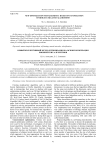
Новый коллективный метод оптимизации на основе кооперации бионических алгоритмов
Статья научная
Описывается и рассматривается новый самонастраивающийся коллективный подох, названный кооперацией бионических алгоритмов (COBRA), основанный на пяти хорошо известных бионических алгоритмах: стайные алгоритмы, алгоритмы волчьих стай, мотыльковые алгоритмы, поиск алгоритмом «кукушки». Кроме того, включены две модификации алгоритма COBRA. Также новый коллективный метод используется для настройки весовых коэффициентов нейронной сети в решении различных задач классификации.
Бесплатно

